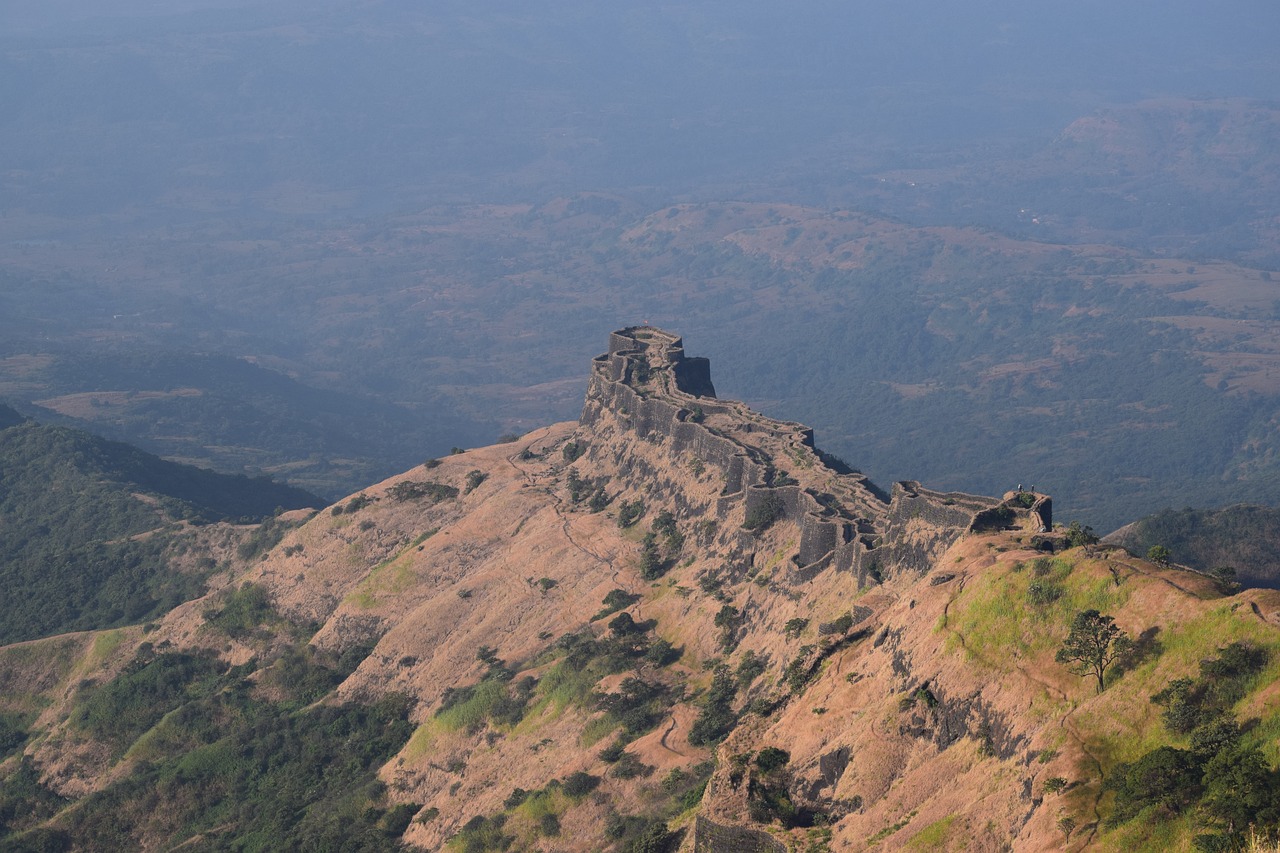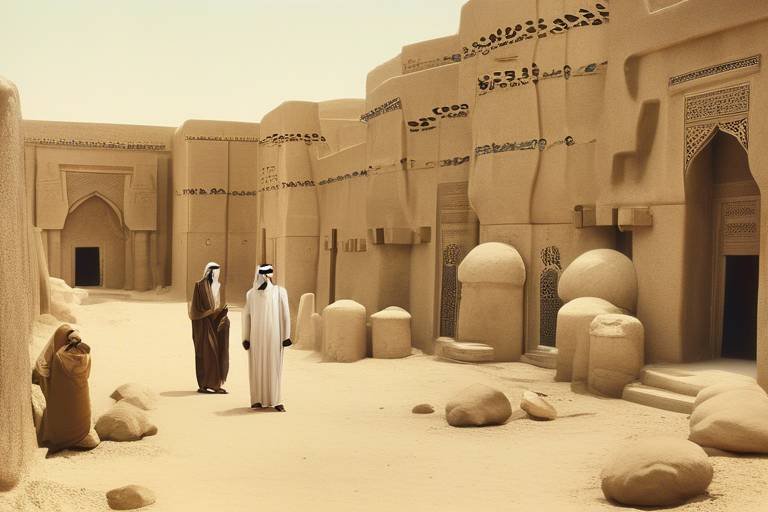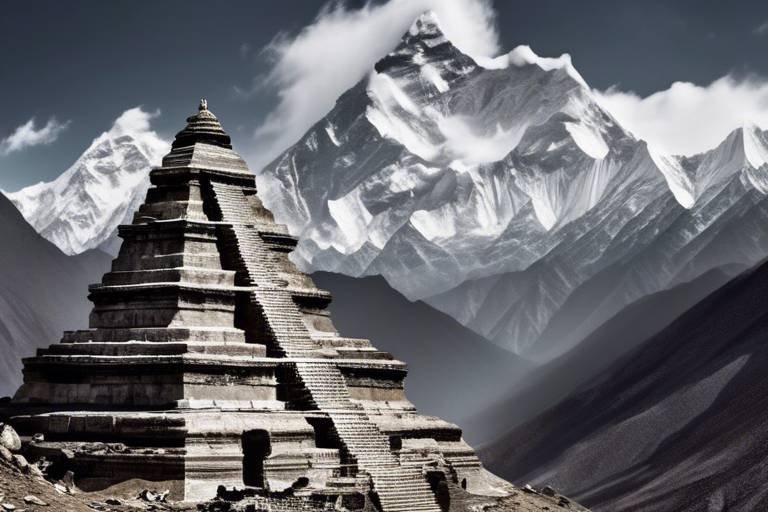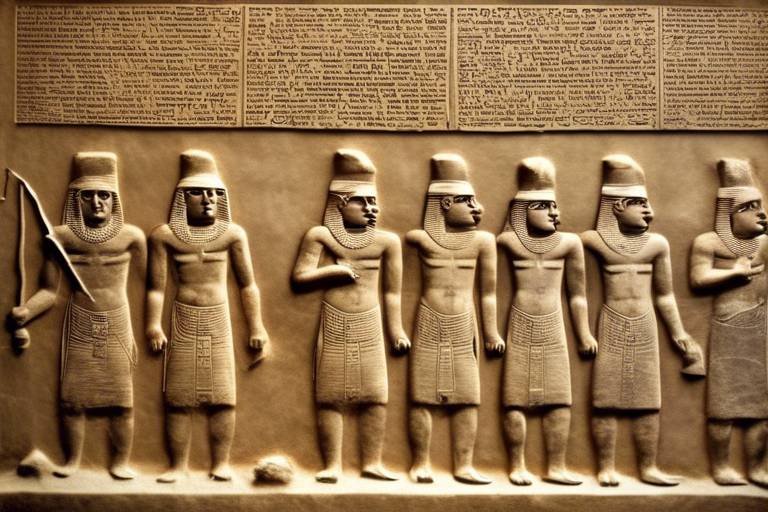The Decline of the Gupta Empire - A Comprehensive Review
Exploring the factors and events that led to the decline of the influential Gupta Empire in ancient India, analyzing the impact on society, economy, and politics of the time.
The Gupta Empire, once a beacon of prosperity and cultural flourishing in ancient India, faced a gradual decline that shook the very foundations of its existence. Various factors converged to orchestrate the downfall of this mighty empire, leaving a lasting impact on the social, economic, and political landscape of the era.
One of the primary drivers behind the Gupta Empire's decline was the onslaught of economic challenges that plagued its financial stability. Currency devaluation, trade disruptions due to external invasions, and financial mismanagement within the empire all played pivotal roles in weakening the economic foundation of the Gupta dynasty.
Amidst the economic turmoil, political instability further exacerbated the empire's vulnerability. Internal strife, weak leadership plagued by succession crises, and a lack of cohesive governance structures gradually eroded the political fabric of the Gupta Empire, paving the way for its eventual downfall.
The Gupta Empire faced relentless invasions by the Huns and other foreign powers, posing significant military challenges to the ruling elite. The constant pressure from external threats weakened the empire's defenses and drained its resources, making it increasingly difficult to maintain control over its vast territories.
Simmering social unrest, fueled by caste conflicts and peasant uprisings, added another layer of complexity to the Gupta Empire's woes. The internal turmoil and rebellion from within the society further destabilized the empire, undermining its ability to maintain order and cohesion.
As the Gupta Empire grappled with external and internal challenges, profound cultural transformations and intellectual shifts reshaped the societal norms of the time. Religious changes and evolving cultural dynamics contributed to a shifting landscape that reflected the empire's declining influence.
The fragmentation of regional power centers and the rise of local rulers who challenged Gupta authority marked a significant turning point in the empire's disintegration. The emergence of competing power structures further weakened the central authority of the Gupta dynasty, hastening its decline.
During the twilight years of the Gupta Empire, a noticeable decline in artistic and architectural achievements became apparent. The fading cultural glory mirrored the broader decline of the empire, with artistic endeavors losing their former vibrancy and innovation.
Despite its eventual decline, the Gupta Empire left a lasting legacy and historical impact on the Indian subcontinent. Its contributions to art, science, and governance continue to resonate through the annals of history, offering valuable lessons learned from the empire's rise and fall.
1. What were the primary economic challenges that contributed to the decline of the Gupta Empire?
2. How did political instability weaken the governance structure of the Gupta dynasty?
3. What role did external invasions play in the downfall of the Gupta Empire?
4. How did social unrest and rebellion impact the stability of the Gupta Empire?
5. What cultural changes occurred during the decline of the Gupta Empire?
6. How did regional fragmentation contribute to the disintegration of the Gupta Empire?
7. Why did the artistic and architectural achievements decline in the later period of the Gupta Empire?
8. What is the legacy of the Gupta Empire and its historical impact on the Indian subcontinent?

Economic Challenges
Exploring the factors and events that led to the decline of the influential Gupta Empire in ancient India, analyzing the impact on society, economy, and politics of the time.
During its peak, the Gupta Empire faced a myriad of economic challenges that eventually played a significant role in its downfall. One of the critical issues was the rampant currency devaluation that plagued the empire. The continuous minting of coins without proper backing led to a severe devaluation of the currency, causing economic instability and distrust among the populace. As a result, trade suffered, and the economy faltered under the weight of financial uncertainty.
Moreover, trade disruptions further exacerbated the economic woes of the Gupta Empire. The flourishing trade networks that once sustained the empire began to crumble due to constant invasions and conflicts. The disruption of trade routes not only hindered economic growth but also weakened the empire's ability to generate revenue and resources essential for its stability.
Financial mismanagement also played a crucial role in the economic challenges faced by the Gupta Empire. The lack of effective fiscal policies and corruption within the administration drained the empire's coffers, leading to a scarcity of funds for essential services and infrastructure development. The mismanagement of resources further strained the economy, creating a cycle of decline that was difficult to break.
In summary, the economic challenges, including currency devaluation, trade disruptions, and financial mismanagement, collectively contributed to the gradual decline of the Gupta Empire, marking a significant turning point in its history.

Political Instability
Political instability played a significant role in the downfall of the once-mighty Gupta Empire. The internal strife and power struggles among the ruling elite weakened the central authority, creating a vacuum that was exploited by rival factions and external forces. The lack of strong leadership and ineffective governance exacerbated the situation, leading to a state of chaos and disarray within the empire.
The succession crises that plagued the Gupta rulers further exacerbated the political instability. The frequent changes in leadership and the lack of a clear line of succession created uncertainty and power struggles, weakening the empire's ability to effectively govern and defend itself against external threats.
The weakening political structure of the Gupta Empire made it vulnerable to both internal and external pressures. Rival noble families vied for power, leading to factionalism and infighting that further destabilized the empire. Additionally, the lack of a unified leadership made it difficult to mount a coordinated defense against invading forces.
As political instability grew, the Gupta Empire found itself increasingly unable to maintain control over its vast territories. Local rulers and governors began asserting more autonomy, challenging the authority of the central government. This fragmentation of power further weakened the empire's ability to govern effectively and respond to external threats.
In conclusion, political instability was a key factor in the decline of the Gupta Empire, contributing to its eventual disintegration and loss of influence in ancient India.

Invasions and External Threats
Exploring the factors and events that led to the decline of the influential Gupta Empire in ancient India, analyzing the impact on society, economy, and politics of the time.
The Gupta Empire faced significant challenges from invasions and external threats, particularly from the Huns and other foreign powers. These invasions exerted immense pressure on the empire, testing the military capabilities and strategic prowess of the Gupta rulers. The constant threat of external aggression disrupted the stability of the empire and posed a serious challenge to its territorial integrity.
The Huns, known for their fierce nomadic warrior culture, launched devastating incursions into Gupta territories, causing widespread destruction and chaos. The Gupta Empire struggled to defend its borders against these formidable invaders, leading to territorial losses and weakening the empire's grip on its vast domain. The military confrontations with the Huns drained the empire's resources and manpower, further exacerbating its vulnerabilities.
In addition to the Huns, other foreign powers also exploited the Gupta Empire's vulnerabilities, launching incursions and asserting their influence in various regions. These external threats not only posed military challenges but also disrupted trade routes, leading to economic hardships for the empire. The Gupta rulers faced the daunting task of balancing defense against external aggression with internal governance and economic stability.
Despite the valiant efforts of the Gupta military, the relentless pressure from invasions and external threats eventually took its toll on the empire. The constant state of conflict and insecurity contributed to the overall decline of the Gupta Empire, marking a pivotal turning point in its history.

Social Unrest and Rebellion
Social unrest and rebellion played a significant role in the decline of the once prosperous Gupta Empire. The societal fabric of the empire started to unravel as various factors fueled discontent among the population. Caste conflicts, a prevalent issue in ancient Indian society, intensified during this period, leading to tensions and divisions among different social groups. The rigid caste system, which had been a stable structure for centuries, faced challenges as lower castes sought to improve their social standing and rights, causing disruptions in the traditional order.
Peasant uprisings also erupted across different regions of the Gupta Empire, fueled by economic hardships, oppressive taxation, and lack of governmental support. The agricultural sector, which formed the backbone of the empire's economy, faced challenges due to mismanagement and exploitation by local officials. As a result, peasants rose up against the ruling elite, demanding fair treatment and relief from burdensome policies.
The emergence of charismatic leaders and rebel movements further destabilized the political landscape, challenging the authority of the Gupta rulers. These rebellions, fueled by grievances and aspirations for change, posed a direct threat to the empire's stability. The lack of effective governance and response to these uprisings weakened the central authority, allowing dissent to spread and gain momentum.
Moreover, the growing discontent among the populace created a sense of disillusionment with the Gupta Empire's ability to address the needs of its people. The social fabric, once held together by shared values and hierarchical structures, began to fray as communities sought to assert their autonomy and demand greater representation in decision-making processes.
In conclusion, social unrest and rebellion were pivotal factors that contributed to the decline of the Gupta Empire, highlighting the interconnected nature of societal, economic, and political challenges during this tumultuous period in ancient Indian history.

Cultural Changes
During the decline of the Gupta Empire, significant cultural changes swept through ancient India, reshaping the societal fabric and intellectual landscape of the time. The once vibrant cultural scene of the empire began to witness shifts in artistic expressions, religious beliefs, and intellectual pursuits, marking a period of transition and transformation.
One of the notable cultural changes was the emergence of new religious movements and the decline of traditional Vedic practices. The rise of Buddhism and Jainism gained momentum during this period, challenging the dominance of Brahmanism and influencing the spiritual beliefs of the populace. The Gupta era witnessed a flourishing of Buddhist art and architecture, reflecting the changing religious dynamics of the society.
Intellectual pursuits also underwent a transformation, with scholars and thinkers exploring new philosophical ideas and questioning established norms. The decline of the Gupta Empire saw a shift towards more diverse intellectual discourses, fostering debates on metaphysics, ethics, and social order. This intellectual ferment laid the groundwork for future philosophical developments in India.
Furthermore, the cultural changes during this period were reflected in the artistic expressions of the time. While the early Gupta period was known for its magnificent sculptures, intricate paintings, and architectural marvels such as the Ajanta and Ellora caves, the later years witnessed a decline in artistic achievements. The patronage for the arts waned, leading to a stagnation in artistic innovation and a fading of the cultural glory that once defined the Gupta Empire.
Amidst these cultural transformations, the Gupta Empire grappled with the challenges of maintaining its cultural identity in the face of evolving societal norms and external influences. The cultural changes during the decline of the Gupta Empire not only shaped the artistic and intellectual landscape of ancient India but also laid the foundation for the rich cultural heritage that continues to resonate in the region today.

Regional Fragmentation
During the decline of the Gupta Empire, one significant factor that played a crucial role was regional fragmentation. As the central authority of the empire weakened, regional power centers started to assert their independence, leading to a fragmentation of the once-unified empire. This fragmentation was fueled by the emergence of local rulers who sought to challenge the authority of the Gupta rulers and establish their own dominions.
The regional fragmentation of the Gupta Empire resulted in a loss of centralized control and governance, as different regions became more autonomous and self-governing. This decentralization of power weakened the overall strength of the empire, making it more vulnerable to external invasions and internal conflicts. The disintegration of the once-unified empire into smaller, competing regions marked a significant turning point in the history of ancient India.
As regional fragmentation took hold, the Gupta Empire faced challenges in maintaining its territorial integrity and authority over distant provinces. The emergence of local rulers who claimed sovereignty over their territories further eroded the power of the central government, leading to a breakdown of the imperial structure. This fragmentation not only weakened the military capabilities of the empire but also hindered its ability to effectively govern and administer its vast territories.
The regional fragmentation of the Gupta Empire also had profound socio-economic implications, as trade routes were disrupted, and economic activities were hampered by the lack of a unified administration. The disintegration of the empire into smaller regional entities led to increased competition and conflicts between different power centers, further destabilizing the political landscape of ancient India.
In conclusion, regional fragmentation was a significant factor that contributed to the decline of the Gupta Empire, marking the end of an era of centralized imperial rule in ancient India. The emergence of local rulers and the fragmentation of power centers weakened the empire's authority and paved the way for its eventual disintegration, leaving a lasting impact on the political and social dynamics of the region.

Artistic and Architectural Decline
During the later period of the Gupta Empire, a noticeable decline in artistic and architectural achievements became increasingly evident. The once vibrant and innovative artistic expressions that characterized the early Gupta era started to wane, reflecting the broader decline of the empire. This decline in artistic and architectural prowess was influenced by various factors that had a profound impact on the cultural landscape of the time.
One significant factor contributing to the artistic and architectural decline was the economic challenges faced by the empire. As the Gupta Empire grappled with currency devaluation, trade disruptions, and financial mismanagement, the patronage of artists and architects dwindled. The lack of financial resources and stability hindered the creation of grand architectural marvels and intricate artistic masterpieces that were prevalent in the empire's golden age.
Furthermore, the political instability within the Gupta Empire played a crucial role in the decline of artistic and architectural endeavors. The internal strife, weak leadership, and succession crises diverted attention and resources away from cultural development. With the rulers preoccupied with power struggles and governance issues, the once flourishing artistic and architectural projects were neglected, leading to a visible decline in quality and innovation.
Additionally, the invasions and external threats faced by the Gupta Empire also had a detrimental effect on artistic and architectural advancements. The constant military challenges posed by foreign powers such as the Huns diverted resources towards defense and warfare, leaving little room for the promotion of art and architecture. The need to fortify cities and defend territories took precedence over cultural pursuits, resulting in a stagnation of artistic creativity and architectural innovation.
As the Gupta Empire faced social unrest, caste conflicts, and peasant uprisings, the societal turmoil further contributed to the decline in artistic and architectural achievements. The upheaval within the empire disrupted the cultural ecosystem, leading to a loss of patronage for artists and architects. The focus shifted towards addressing social tensions and maintaining order, leaving little room for the flourishing of artistic endeavors that had characterized the earlier period of the empire.
In conclusion, the artistic and architectural decline during the later years of the Gupta Empire was a multifaceted phenomenon influenced by economic challenges, political instability, external threats, and social unrest. The fading cultural glory of the empire reflected the broader decline that gripped various aspects of Gupta society, signaling the end of an era marked by artistic brilliance and architectural splendor.

Legacy and Historical Impact
The legacy of the Gupta Empire left a lasting imprint on the Indian subcontinent, shaping the course of history and influencing future generations. Despite its eventual decline, the Gupta Empire's contributions in various fields continue to be revered and studied.
One of the most significant legacies of the Gupta Empire lies in the realm of cultural and intellectual advancements. The period of Gupta rule is often referred to as the "Golden Age of India" due to the flourishing of arts, science, and philosophy. Scholars and artists thrived under the patronage of Gupta rulers, leading to remarkable achievements in literature, music, and architecture.
Furthermore, the Gupta Empire's administrative innovations set a benchmark for governance in ancient India. The concept of a centralized administration, efficient tax collection systems, and a structured legal framework established by the Guptas influenced subsequent dynasties and empires in the region.
From a historical perspective, the decline of the Gupta Empire serves as a cautionary tale about the perils of complacency and internal discord. The fragmentation of regional power centers and the erosion of central authority within the empire highlight the importance of unity and strong leadership in maintaining a stable and prosperous state.
Moreover, the Gupta Empire's legacy in the field of mathematics and astronomy is particularly noteworthy. The development of the decimal numeral system, the concept of zero, and significant advancements in trigonometry and calculus during this period laid the foundation for modern mathematical principles still used today.
In terms of historical impact, the Gupta Empire's decline marked a pivotal moment in Indian history, leading to a period of political fragmentation and regional conflicts. The power vacuum left by the Gupta rulers paved the way for the rise of new dynasties and kingdoms, each vying for supremacy in the post-Gupta era.
Overall, the Gupta Empire's legacy and historical impact continue to be subjects of fascination and study, offering valuable insights into the complexities of ancient Indian civilization and the enduring influence of a once-mighty empire.
Frequently Asked Questions
- What were the main economic challenges faced by the Gupta Empire?
The Gupta Empire encountered significant economic challenges such as currency devaluation, disruptions in trade routes, and financial mismanagement. These issues contributed to the empire's decline by weakening its economic foundations.
- How did political instability affect the Gupta Empire?
Political instability within the Gupta Empire, characterized by internal strife, weak leadership, and succession crises, led to a weakened political structure. This instability played a crucial role in the eventual decline of the empire.
- What role did invasions and external threats play in the downfall of the Gupta Empire?
The Gupta Empire faced invasions by the Huns and other foreign powers, which exerted pressure on the empire and posed military challenges to its rulers. These external threats significantly contributed to the empire's decline.
- How did social unrest and rebellion impact the Gupta Empire?
Social unrest, caste conflicts, and peasant uprisings emerged within the Gupta Empire, affecting stability and contributing to its decline. These internal conflicts added to the challenges faced by the empire during its later years.
- What were the cultural changes that occurred during the decline of the Gupta Empire?
The decline of the Gupta Empire witnessed cultural transformations, religious shifts, and intellectual changes that shaped the society of the period. These cultural shifts played a significant role in the empire's transformation.
- How did regional fragmentation contribute to the disintegration of the Gupta Empire?
The fragmentation of regional power centers and the rise of local rulers challenging Gupta authority played a key role in the empire's disintegration. This regional fragmentation weakened the empire's central control.
- What factors led to the decline in artistic and architectural achievements of the Gupta Empire?
The later period of the Gupta Empire saw a decline in artistic and architectural accomplishments due to various reasons. Understanding these factors provides insights into the fading cultural glory of the empire.
- What is the legacy of the Gupta Empire and its historical impact on the Indian subcontinent?
The legacy of the Gupta Empire and its historical impact on the Indian subcontinent are significant. Evaluating the empire's contributions and the lessons learned from its decline sheds light on its enduring influence.



















